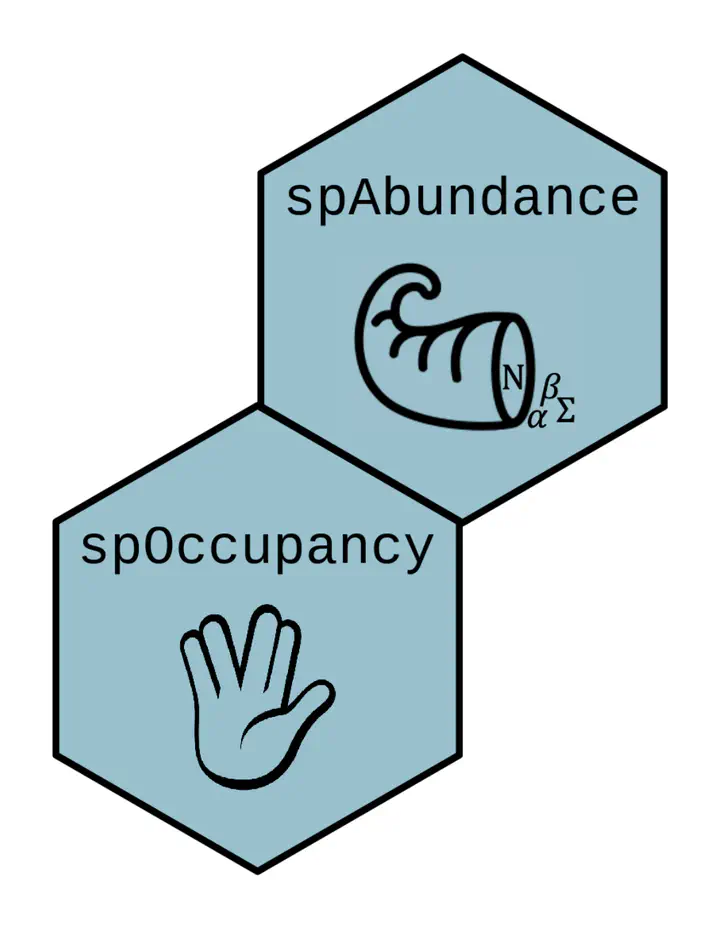Statistical ecology software development

Effective forest and wildlife management requires user-friendly software that makes state-of-the-art statistical tools accessible to natural resource managers, foresters, wildlife professionals, and conservation practitioners. A key pillar of the lab’s research is developing computationally-efficient and accessible software to understand the ecological and anthropogenic drivers of species distributions, population dynamics, and biodiversity patterns.
I am the lead author and maintainer of the spOccupancy R package, which fits spatially explicit single-species, multi-species, and integrated Bayesian occupancy models (Doser et al. 2022 MEE), with an emphasis on making these complex statistical models accessible to ecologists, managers, and conservation practitioners that may lack extensive training in spatial statistics. With collaborators across the world, I am actively using spOccupancy to inform effective conservation and management approaches for birds, mammals, trees, bats, crickets, invasive aquatic plants, and cartilaginous fish. For example, with collaborators at the University of Arkansas, we used spOccupancy within a scenario planning framework to understand the effects of multiple woodland restoration outcomes on bird communities in Arkansas, USA (Roberts et al. 2024 Restoration Ecology).
I am also the lead author and maintainer of the R package spAbundance that provides user-friendly approaches to efficiently fit spatially explicit single-species (i.e., univariate) and multi-species (i.e., multivariate) abundance-based generalized linear models, N-mixture models, and distance sampling models (Doser et al. 2024 MEE). spAbundance allows for robust modeling of multi-species abundance patterns, providing crucial insight into the patterns that determine population dynamics and ecological communities. I am actively using spAbundance to inform different management and conservation objectives for Middle Eastern and midwestern US butterfly communities, as well as forest communities across the US. In our introductory paper on integrated community models (Zipkin et al. 2023 Journal of Animal Ecology), we used spAbundance to estimate trends of 10 butterfly species across the Midwestern US using five data sources. The Statistical Ecology and Forest Science Lab is actively using spAbundance to develop analysis workflows for unit-level small area estimation of forest biomass and related parameters.
I also contributed to the the R package ForestFit, which is designed to streamline estimation of common probability distributions used to model tree diameter distributions, including two and three parameter Weibull distributions, Johnson’s SB distribution, Birnbaum-Saunders distribution, and finite mixture distributions in both a frequentist and Bayesian approach. The package includes additional functionality for estimating parameters of common tree height-diameter models.
Future projects in the Statistical Ecology and Forest Science Lab will continue to develop user-friendly software as well as associated web-based user interfaces that fit models on the back-end and provide resulting visual summaries and numerical results to users.